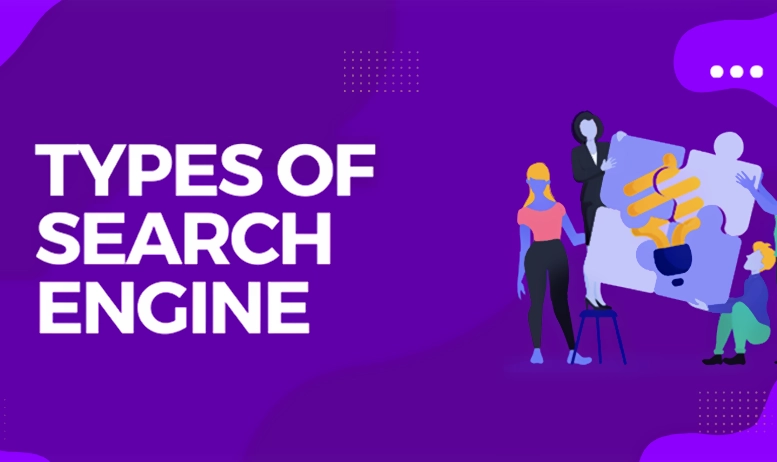
In the digital war, businesses are struggling to increase their online visibility and user attention. Here, SEO acts as a helping tool for businesses to create various strategies and help them win over competitors. It helps them increase their website’s ranking on search engine result pages. Digital strategies can make or even break a business, based on how well you understand them. So, it is important to understand various types of SEO, that complement the performance of overall digital marketing strategy.
SEO acts as a base for effective digital marketing strategy, allowing businesses to enhance their search engine rankings, organic traffic, conversions, and sales. For its effectiveness, understanding SEO techniques and their purpose is important. It helps business owners adapt to changing algorithms, as these algorithms modify according to industry trends, user behaviors, and search intents. So, they remain relevant in the eyes of both consumers and search engines.
In this essence, understanding SEO is not about optimizing the websites only, it is also about creating strong and meaningful connections with the target audience. All of these efforts end up driving growth and achieving success in the long term on the search engine. Before we discuss SEO types and purpose, let’s understand what search engine ranking is.
What is search engine ranking?
Search engine ranking is a process of positioning a website on search engine research pages (SERPs) against a specific keyword or query. It refers to the authority and relevance allocated to a website by search engines such as Google, in response to a user’s query. Websites appearing higher in the search results seem to be more authoritative and relevant to the users’ search query. Websites that appear lower in the search engines have less authority and relevance with the users' search results. This is because of low content quality, poor website optimization, duplicate content, etc, ultimately leading to a poor user experience. So, high-quality content is important along with an optimized website to enhance the user experience and increase search engine ranking.
Types of search engine optimization with their purpose

Website owners adopt various techniques for search engine optimization, which depend on their purpose. Now that you have a clear understanding of SEO and search engine ranking, let’s discover the most adopted types of SEO and why they are used.
1- Technical SEO
Technical SEO is all about the optimization of technical factors of a website to enhance its indexing, crawling, and overall performance in SERPs. By fixing technical issues, it improves the ranking of a website. The following strategies are included in technical SEO:
- Optimization of site speed
- Optimizing the URL structure
- Fixing crawl errors
- Implementation of structured data markup
- Enhancing and ensuring mobile-friendliness
Technical SEO strategies are implemented with the aim of making it easier for search engines to crawl and index a website. Ultimately, the website becomes search engine friendly, attracts more traffic, and moves higher in the search engine result pages.
2- On-Page SEO
On-page SEO is the process of optimizing individual web pages that enhance their relevance and ranking in the search engine results pages. When keywords are incorporated naturally, such strategies result in the creation of high-quality and valuable content that satisfies the users’ intent. On-page SEO includes
- Optimization of meta tags, content, and headings.
- Creation of internal linking structures.
- Optimizing URL structures and images for better crawling.
The main purpose of on-page SEO is to increase the accessibility of the website for search engines and increase its visibility for specific keywords. On-page SEO technique also ensures that the website is both user-friendly and search engine friendly, hence increasing its ranking.
3- Off-Page SEO
As apparent from the name, Off-page SEO refers to the optimization of components that are outside of the website, improving its credibility and authority in search engines. Off-page SEO strategies include
- Creating high-quality backlinks from relevant and high-authority websites
- Writing high-quality guest posts and guest posting on reputable websites
- Engaging with the audience on social media and encouraging social sharing
- Submitting websites to online directories that have a reputation
- Managing online reputation and responding to comments, reviews, and discussions
The main purpose of off-page SEO is to improve a website’s online reputation and visibility beyond its domain. It creates a strong digital presence by increasing the website’s reach and exposure reflecting trustworthiness to search engines.
4- Local SEO
Local SEO strategies ensure that a business appears prominently in local search results when users are looking for something relevant to that business. Such search results appear on platforms like Google My Business and Google Maps. The following strategies are a part of local SEO:
- Claiming and Optimizing GMB listing
- Optimization of the website’s on-page elements for local search
- Ensuring NAP (Name, Address, Phone) consistencyCreating location-specific landing pages
The purpose of local SEO is to increase a website’s online visibility within a specific geographical area. It makes it easier for local clients or customers to find and engage with a business. This way, more foot traffic moves to the physical store and more online traffic drives to the website, increasing the credibility and trust with the brand.
5- E-commerce SEO
A specialized technique for search engine optimization of online stores is referred to as e-commerce SEO. Unlike other websites, an e-commerce website faces many challenges for product visibility and conversion. So, this strategy is focused on the optimization of
- Product pages including product titles, images, and descriptions
- Category pages
- Website speed
- Overall website structure
- Mobile-friendliness
The ultimate aim of optimization of an e-commerce website is to provide a smooth user experience and increase the website’s visibility. Ultimately, it increases organic traffic, ranking, and conversions. This is how online store owners utilize e-commerce SEO to increase their revenue and improve the performance of their business.
Conclusion
If summarized, each type of SEO contributes differently but uniquely to improve a website’s online visibility, authority, and relevance in SERPs. These types can be utilized separately, but when combined, they fulfill the purpose. Smart website owners capitalize on the combination of two or more types of SEO in Christchurch and beyond to get the maximum results. The most important thing is to understand how each type contributes and what purpose it serves.

